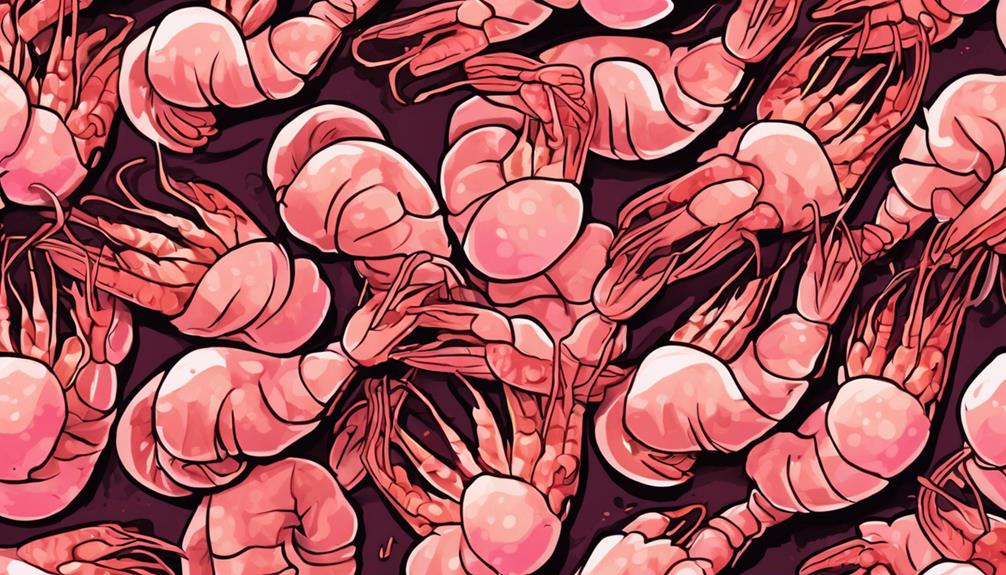When you've cooked shrimp correctly, its texture will be tender, juicy, and not rubbery, providing a gratifying bite. The color should appear light pink with a slight opaqueness, showing no gray or opaque spots, giving it an attractive look. These aspects guarantee a properly cooked shrimp for your dining enjoyment.
Main Points
- Properly cooked shrimp should have a light pink color with slight opaqueness.
- The texture should be tender, juicy, and not rubbery.
- Shrimp should appear firm, plump, and free of black spots.
- Avoid overcooked shrimp that is dry, shrunk, or mushy.
- Look for a C-shaped curl, red or pink tails, and no translucency for well-cooked shrimp.
Freshness of Shrimp
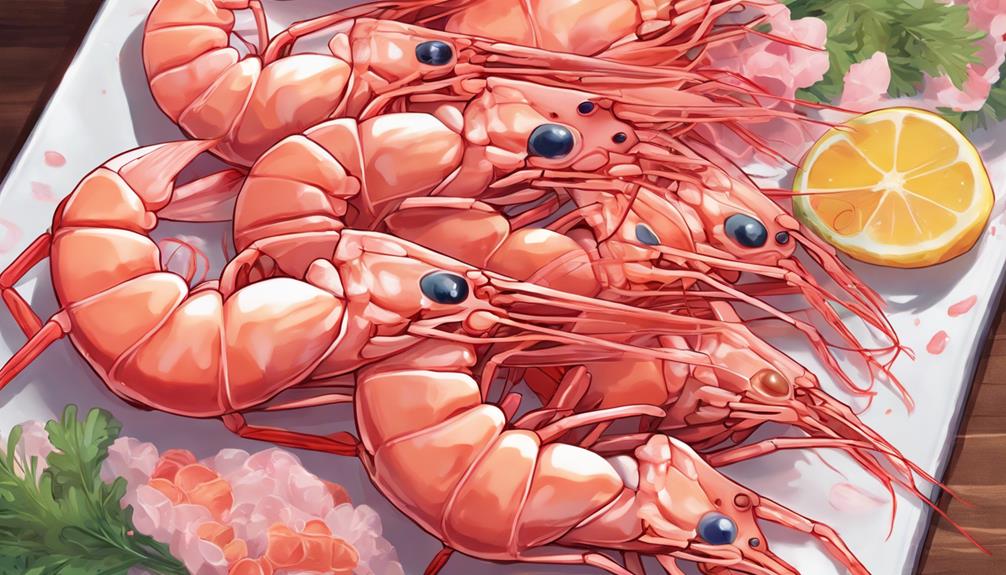
When evaluating the freshness of shrimp, inspect the color and texture of the shell for signs of quality. Fresh shrimp should have a translucent appearance with a slightly iridescent sheen. The shell color should be a grayish-green or a natural pinkish hue, depending on the species. Avoid shrimp with any black spots or discoloration, as these are indicators of spoilage.
Additionally, feel the texture of the shell. It should be firm to the touch and slightly moist. Any sliminess or stickiness on the shell is a red flag for shrimp that's past its prime. Fresh shrimp should also have a mild ocean smell, reminiscent of the sea. If the shrimp gives off a strong ammonia or fishy odor, it's no longer suitable for consumption.
Texture of Raw Shrimp
The texture of raw shrimp is a key indicator of its quality and freshness. When examining raw shrimp, you should look for a firm and slightly springy feel. The flesh should be slightly translucent with a shiny appearance. Run your fingers lightly over the shrimp's surface; it should feel smooth and moist, without any sliminess. Avoid shrimp that feels mushy or slimy, as these are signs of deterioration.
Additionally, the shell of the shrimp should be intact and tightly attached to the flesh. Any gaps or discoloration on the shell may indicate that the shrimp isn't as fresh. The meat inside should have a slight resistance when pressed but bounce back, showing elasticity. If the flesh feels mushy or falls apart easily, it's a sign of poor quality.
Color of Raw Shrimp
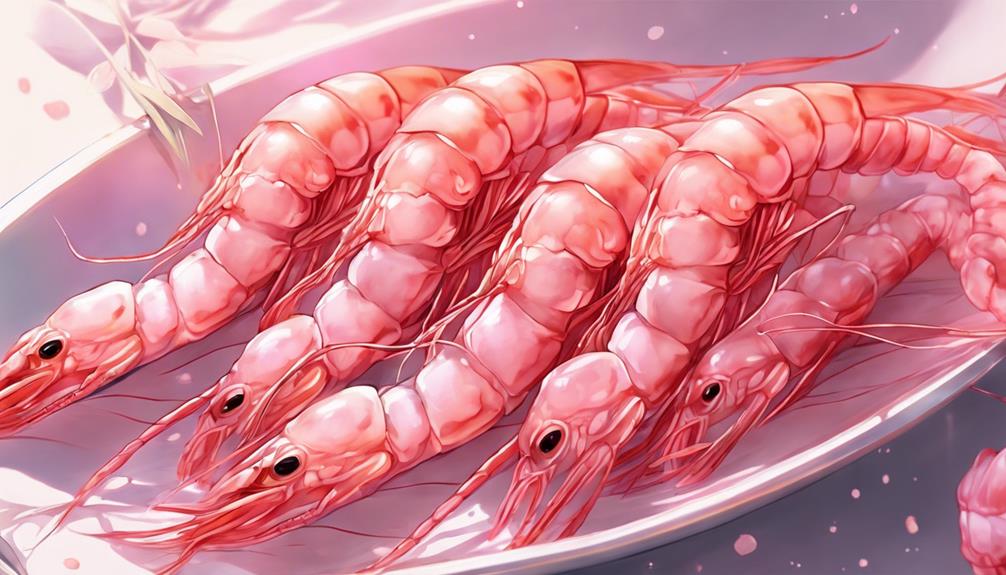
Examining the color of raw shrimp is essential in determining its freshness and quality, as it serves as a visual indicator of the shrimp's condition. When evaluating raw shrimp, you should look for a translucent appearance with a slight grayish-green tint. This coloration is natural and occurs due to the presence of a protein called hemocyanin in the shrimp's bloodstream. The shells of fresh raw shrimp should be slightly transparent, allowing you to see the underlying flesh, which should have a white, pink, or light orange hue, depending on the species.
The color of raw shrimp can vary based on the species and diet of the shrimp. For example, wild-caught shrimp may have a darker hue compared to farm-raised shrimp due to differences in their natural environments. Additionally, the color of raw shrimp may change slightly when cooked, with the flesh turning opaque and taking on a more vibrant pink or orange color depending on the cooking method used.
Texture of Overcooked Shrimp
Overcooking shrimp can result in a rubbery and tough texture that is unappetizing to eat. When shrimp are cooked for too long, the proteins in their muscle fibers contract excessively, causing the shrimp to become chewy and lose their natural juiciness. The texture of overcooked shrimp is often described as similar to that of a rubber band, making it unpleasant to chew and swallow.
To further understand the impact of overcooking on shrimp texture, let's look at a comparison table: Overcooking shrimp causes the proteins to tighten excessively, making the texture rubbery and unpleasant. By examining the table, we can see how varying cooking times directly affect the tenderness and overall quality of the shrimp. The best way to cook shrimp is to monitor them closely and remove them from heat as soon as they turn opaque and pink, ensuring a juicy and flavorful result.
| Aspect | Properly Cooked Shrimp | Overcooked Shrimp |
|---|---|---|
| Texture | Tender and Juicy | Rubber-like |
| Appearance | Firm and Flaky | Tough and Dense |
| Mouthfeel | Succulent | Chewy |
Texture of Undercooked Shrimp
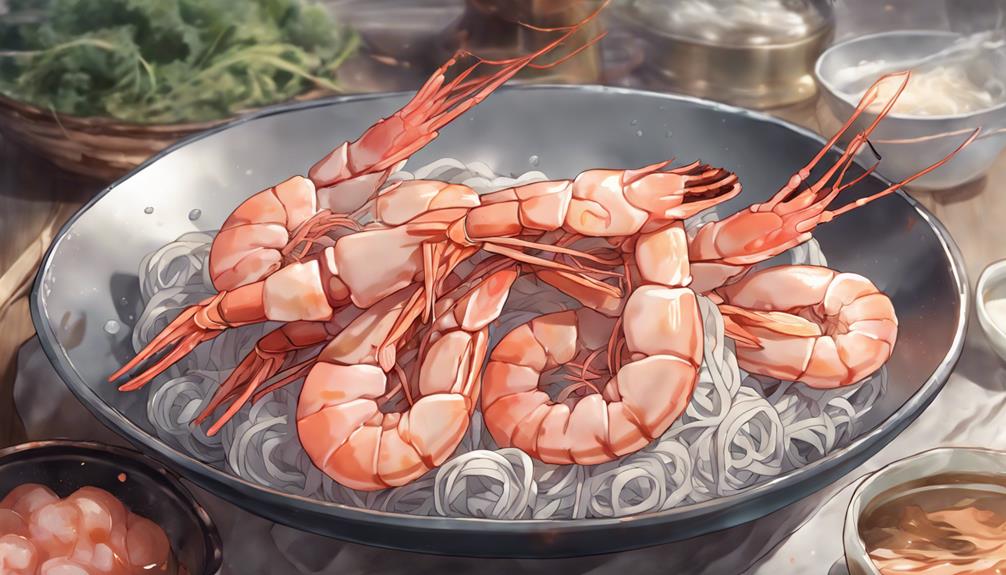
Improperly cooked shrimp may exhibit a soft and translucent texture, signaling that the proteins in the muscle fibers haven't reached the necessary firmness for best taste and mouthfeel. Undercooked shrimp may feel mushy or slimy in your mouth due to the proteins not being denatured properly. The texture is often described as slightly rubbery, lacking the desired snap and firmness associated with well-cooked shrimp.
When biting into undercooked shrimp, you may notice a lack of resistance, almost like the shrimp isn't holding its shape as it should. The translucency of undercooked shrimp indicates that the muscle fibers haven't fully coagulated, resulting in a less appealing mouthfeel.
To guarantee ideal texture, it's important to cook shrimp thoroughly until they're opaque with a slightly firm texture. Properly cooked shrimp should be tender, juicy, and have a pleasant snap when bitten into, providing a satisfying eating experience.
Color Changes During Cooking
During the cooking process, the color of shrimp undergoes distinct changes that can indicate the level of doneness and quality achieved. As shrimp cook, their translucent flesh turns opaque and their color changes from grayish-blue or grayish-green to pink or orange. This transformation is due to the denaturation of proteins in the shrimp, particularly hemocyanin, the oxygen-carrying molecule in their blood. The pink or orange coloration is a result of the heat-induced chemical changes in the proteins.
To better understand the color changes in cooking shrimp, consider the following table:
| Color Before Cooking | Color After Cooking | Doneness Level |
|---|---|---|
| Grayish-blue/Green | Pink/Orange | Undercooked |
| Grayish-pink | Light Pink | Properly Cooked |
| Bright Blue | Reddish-Orange | Overcooked |
Properly Cooked Shrimp Texture
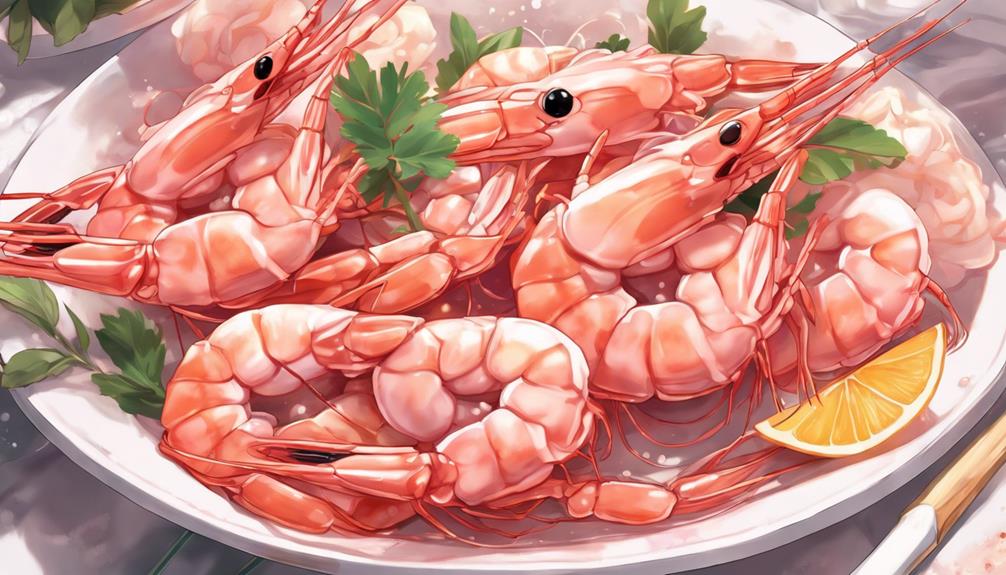
Properly cooked shrimp should exhibit a firm yet tender texture that isn't rubbery or mushy. When cooked correctly, the shrimp's texture should be resilient to the bite, offering a slight resistance before yielding to a juicy and succulent interior.
Overcooked shrimp tend to become tough and chewy due to the proteins contracting excessively, expelling moisture and resulting in a dry, unappetizing texture. On the other hand, undercooked shrimp may feel slimy or overly soft, indicating that the proteins haven't reached the desired level of coagulation.
The ideal texture of properly cooked shrimp is achieved through precise timing and temperature control during the cooking process. By ensuring that the shrimp is cooked just until it turns opaque and curls into a loose 'C' shape, you can savor the perfect balance between firmness and tenderness, elevating your dining experience with each delightful bite.
Properly Cooked Shrimp Color
To achieve the ideal color in cooked shrimp, make sure that the crustaceans are exposed to the essential cooking time and temperature for best results. When properly cooked, shrimp should exhibit a vibrant pink or reddish hue. This color transformation occurs due to the denaturation of proteins in the shrimp's muscle fibers.
The pigments responsible for the pink color are astaxanthin and canthaxanthin, which are naturally present in shrimp. These pigments become more prominent as the shrimp cook and are reflected through the translucent shells.
The essential cooking time is vital in achieving the desired color, as undercooking may result in a grayish appearance, while overcooking can cause the shrimp to turn opaque white with a rubbery texture. By monitoring the cooking process closely and ensuring the shrimp are just cooked through, you can enjoy shrimp with a beautiful pink color that indicates they're perfectly prepared and ready to be enjoyed in your favorite dish.
Signs of Overcooking
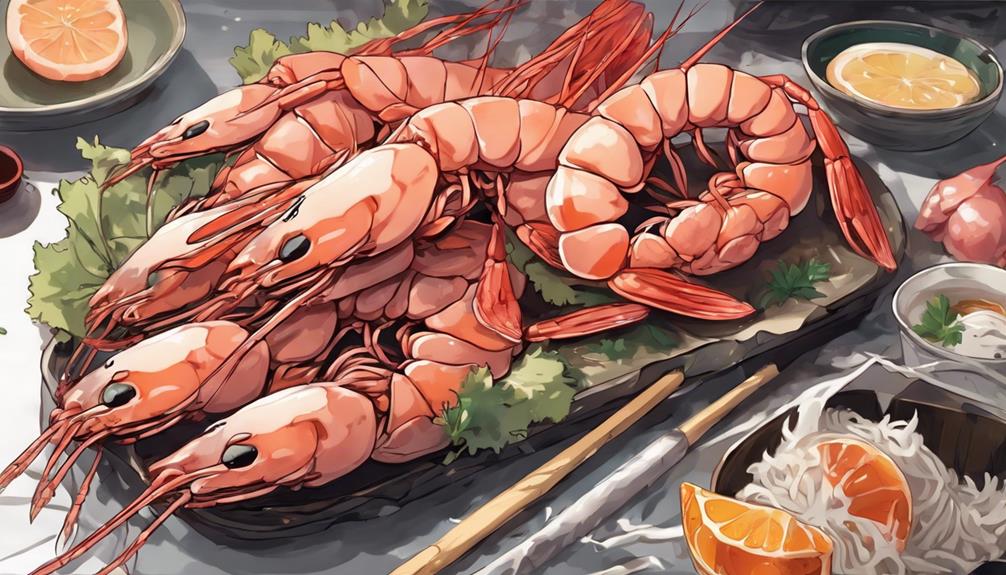
Achieving the ideal color in cooked shrimp is essential, but it's equally important to recognize the signs of overcooking to avoid undesirable outcomes. Overcooking shrimp can lead to a rubbery texture and a loss of flavor. Here are some signs that your shrimp may be overcooked:
- Curling: When shrimp are overcooked, they tend to curl tightly into a circular shape. This curling indicates that the proteins in the shrimp have been denatured excessively, resulting in a tough texture.
- Translucency: Overcooked shrimp will appear translucent rather than opaque. This translucency is a clear sign that the shrimp have been cooked for too long, causing them to become mushy.
- Toughness: Overcooked shrimp will feel rubbery and tough when bitten into. Properly cooked shrimp should be tender and slightly firm, so a tough texture is a clear indicator of overcooking.
Conclusion
Congratulations, you've now mastered the art of cooking shrimp to perfection! Remember, the texture of properly cooked shrimp should be firm yet tender, with a slight bounce to the bite. The color should be a beautiful pinkish hue, indicating that it's cooked just right.
Avoid overcooking at all costs, unless you enjoy rubbery seafood. Keep practicing and soon you'll be the shrimp cooking expert among your friends and family! Happy cooking!
